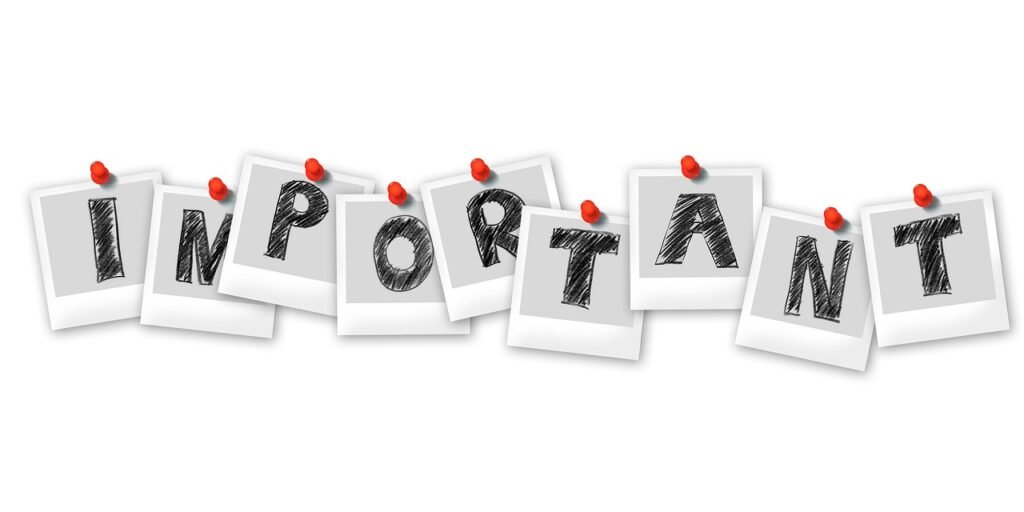
Have you ever wondered about the importance of complications such as moon phase and tourbillon in watchmaking? These intricate features not only add a touch of elegance to a timepiece but also serve a functional purpose. The moon phase complication allows you to track the lunar cycle, while the tourbillon mechanism enhances the accuracy of a watch. In this article, we will explore the significance of these complications and shed light on why they have become prized elements in the world of horology.

Significance of Moon Phase
Definition and Function
The moon phase complication refers to the feature on a watch that displays the current phase of the moon. It mimics the natural cycle of the moon, showcasing the shifting positions of the moon as seen from Earth. This complication adds an additional layer of sophistication and functionality to a timepiece, allowing wearers to connect with the celestial world.
The main function of the moon phase complication is to provide a visual representation of the moon’s current phase. It typically consists of a small aperture or sub-dial on the watch’s dial, displaying a depiction of the moon that corresponds to its actual phase in the sky. This allows wearers to easily identify whether the moon is in a new moon, first quarter, full moon, or last quarter phase.
Historical Significance
The significance of the moon phase complication can be traced back to ancient times when people relied heavily on the celestial bodies for various purposes. Early civilizations used the moon as a natural timekeeping tool, marking the passage of days and months. The moon’s phases played a crucial role in determining the start of seasons, predicting tides, and planning agricultural activities.
In addition to its practical applications, the moon’s phases held cultural and religious significance for many ancient civilizations. The lunar calendar, based on the moon’s cycles, was used to schedule religious ceremonies, festivals, and rituals. The moon phase complication on watches pays homage to this rich historical importance and serves as a reminder of our connection to the natural world.
Astronomical Connection
The moon phase complication establishes a direct connection between timekeeping and astronomy. By incorporating this feature into a watch, manufacturers acknowledge the beauty and influence of the celestial bodies on our daily lives.
The synchronization of a watch’s movement with the lunar cycles allows wearers to keep track of not only the hours and minutes but also the position of the moon. This connection to the vastness of the universe adds a sense of wonder and appreciation for the cosmos.
Furthermore, the moon holds significant religious and cultural symbolism in various societies. It represents cycles of birth, death, and rebirth in some belief systems. The moon phase complication on a watch can serve as a personal reminder of these symbolic meanings, connecting wearers to their beliefs and heritage.
Artistic Appeal
Beyond its practical and astronomical significance, the moon phase complication also holds artistic appeal. The visual enhancement it offers to a watch’s dial can be mesmerizing and captivating.
Watchmakers take great care in designing and crafting the moon phase display, often incorporating intricate details and textures. The moon itself may be depicted in various materials, such as precious metals, enamel, or even miniature paintings. This combination of craftsmanship and artistry elevates the watch’s aesthetic appeal and makes it a unique piece of wearable art.
The poetic representation of the moon phase complication is another aspect of its artistic appeal. Many people find beauty and romance in moonlit nights, and having a watch that reflects the moon’s influence adds a touch of elegance and charm to one’s wrist.
Definition and Function of Moon Phase
Explanation of Moon Phase Complication
The moon phase complication is a mechanism integrated into a watch movement that accurately represents the current phase of the moon. It consists of several components working together to replicate the lunar cycle.
The moon phase display is often set as a disc with two identical moons, one on each side. The disc rotates at a rate that corresponds to the moon’s actual orbital period. As the disc turns, the moon displayed in the aperture or sub-dial on the watch’s dial changes, mimicking the moon’s apparent motion in the sky from the perspective of an observer on Earth.
To ensure accuracy, the moon phase complication is calibrated to match the lunar cycle as closely as possible. The mechanism may be equipped with a gear system that carefully measures the duration of a lunar month, which lasts approximately 29.5 days. By accounting for the slight difference in duration between a lunar month and a watch’s typical 30-day month, the accuracy of the moon phase complication is maintained.
Accuracy and Precision
While the moon phase complication can accurately represent the moon’s phase at the time of setting, it does require occasional adjustment to account for the slight discrepancy between the lunar and calendar months. As a result, most moon phase watches come with a correction mechanism that allows the wearer to manually adjust the display if needed.
Various factors, such as the quality of the movement and the precision of the gear system, influence the accuracy of the moon phase complication. Higher-end timepieces often incorporate more sophisticated mechanisms and undergo stringent testing to ensure their precision. However, minor variations are expected due to factors such as the wearer’s geographic location and the watch’s age. Nonetheless, the moon phase complication primarily serves as an aesthetic and symbolic feature rather than a function for precise timekeeping.
Practical Applications
Although the moon phase complication is not primarily designed for practical timekeeping purposes, it does have some practical applications in specific contexts. For example, sailors and fishermen historically relied on the moon’s phases to predict tidal patterns. By having a moon phase watch, they could more effectively plan their activities and navigate safely.
Additionally, the moon phase complication can serve as a conversation starter or an interesting way to spark curiosity. Wearers of moon phase watches can share their knowledge of the lunar cycle and its significance, leading to engaging conversations and connections with others who appreciate the beauty and allure of the moon.
Historical Significance of Moon Phase
Early Timekeeping
Before the advent of mechanical clocks and watches, people looked to the sun, moon, and stars to track the passage of time. The moon’s phases played a crucial role in ancient timekeeping methods.
Early civilizations, such as the ancient Egyptians and Babylonians, relied on lunar calendars that divided the year into 12 or 13 months based on the moon’s cycles. Observing the moon’s phases allowed them to determine the start of seasons, predict harvest times, and plan religious festivals. The moon phase complication on watches pays homage to this historical connection, preserving a tradition that dates back thousands of years.
Lunar Calendar Influence
The influence of lunar calendars on human culture is profound and far-reaching. Many societies, including Chinese, Islamic, and Hindu civilizations, continue to use lunar calendars for various purposes, such as determining religious holidays and scheduling lunar festivals. The moon phase complication on watches acknowledges the continuing importance of lunar calendars in these cultures and serves as a personal connection to their traditions.
Role in Navigational Aids
During the age of exploration, sailors heavily relied on celestial navigation to traverse the open seas. Lacking accurate timekeeping instruments, they used the moon’s phases as a navigational aid. By aligning their observations of the moon’s position and phase with nautical almanacs, sailors could estimate their longitude and navigate their ships more effectively.
Today, modern navigational technology has replaced the reliance on celestial bodies for navigation. However, the moon phase complication on watches honors this historical significance and reminds wearers of the vital role the moon once played in navigating the vast oceans.
Astronomical Connection of Moon Phase
Synchronization of Watch and Lunar Cycles
The moon phase complication creates a direct connection between a watch’s timekeeping function and the natural cycles of the moon. By incorporating this feature, watchmakers allow wearers to align their personal time with the cosmic rhythm of the lunar cycle.
It is a testament to the intricate craftsmanship of watchmaking that the motion of the moon phase complication mirrors the moon’s motion in the sky. The synchronization of a watch’s movement with the lunar cycles fosters a sense of harmony and connection to the broader universe.
Celestial Beauty Acknowledgment
The moon holds a unique allure for many people, inspiring feelings of wonder and awe. The moon phase complication allows wearers to acknowledge and appreciate the beauty of the celestial world in a tangible way.
The appearance of the moon phase display on a watch’s dial adds a touch of celestial elegance. Whether depicted through a simple aperture or an intricately detailed sub-dial, the moon phase complication draws attention to the watch’s connection to the wider cosmos.
Religious and Cultural Symbolism
The moon’s significance goes beyond its astronomical beauty. It carries profound religious and cultural symbolism in various societies around the world. The moon phase complication serves as a metaphorical representation of these symbolic meanings, allowing wearers to express their beliefs and values.
In some religious traditions, the moon symbolizes femininity, fertility, and the cycles of life. For others, it represents enlightenment, wisdom, and spiritual awakening. The moon phase complication on a watch becomes a personal reminder of these symbolic associations, offering a subtle way to showcase one’s faith or cultural heritage.

Artistic Appeal of Moon Phase
Visual Enhancement of Dial
The moon phase complication adds a captivating element to a watch’s dial. The visual presence of a moon phase display can transform an ordinary timepiece into a work of art.
Watchmakers carefully design and craft the moon phase display to be aesthetically pleasing and visually striking. The depiction of the moon may incorporate different materials, such as precious metals, enamel, or even intricately painted miniatures. This attention to detail and artistic flair enhances the overall appeal of the watch, making it a statement piece.
Romantic and Poetic Representation
The moon has long been associated with romanticism, poetry, and emotions. Its celestial glow and gentle presence evoke feelings of love, longing, and nostalgia. The moon phase complication on a watch captures this romantic essence, infusing it into the timepiece.
Wearing a watch with a moon phase display can evoke a sense of whimsy and poetry. It invites wearers to indulge in the beauty and magic of the moon, celebrating its association with love, dreams, and the intangible aspects of life.
Personal Expression
A watch is more than just a timekeeping device; it is a personal expression of style and personality. The moon phase complication offers wearers the opportunity to showcase their individuality and affinity towards the celestial world.
By selecting a watch with a moon phase feature, individuals can communicate their appreciation for the beauty of nature, their love for astronomy, or their connection to specific cultural or religious beliefs. It becomes a statement piece that reflects their interests and passions to the world.
Significance of Tourbillon
Definition and Purpose
The tourbillon complication is a complex mechanism found in some high-end mechanical watches. It aims to improve timekeeping accuracy by counteracting the effects of gravity on the movement of the watch.
The word “tourbillon” translates to “whirlwind” in French, which appropriately describes the movement of this particular complication. Originally invented by Abraham-Louis Breguet in the late 18th century, the tourbillon has become synonymous with exceptional craftsmanship, precision, and technical mastery in watchmaking.
Compensating for Gravity
Gravity exerts a constant force on mechanical watches, affecting the accuracy of their movements. In a traditional movement, the position of the watch and its components determines the rate at which it gains or loses time.
The tourbillon mechanism combats this issue by continuously rotating the escapement and balance wheel assembly. By constantly changing the position of these components relative to the force of gravity, the tourbillon averages out the effects of gravity and increases the overall accuracy of the watch.
Enhancing Timekeeping Accuracy
The primary purpose of the tourbillon complication is to enhance the accuracy of mechanical watches. By minimizing the influence of gravity, the tourbillon compensates for position-related errors and deviations in timekeeping.
Traditionally, pocket watches were more susceptible to gravity-induced errors due to their stationary nature. As pocket watches evolved into wristwatches, wearers’ movements introduced additional positional errors. The incorporation of a tourbillon mechanism in a watch counteracts these errors, resulting in improved accuracy and stability.
Craftsmanship Showcase
The tourbillon is not only a functional complication but also a testament to the skill and artistry of watchmakers. Its intricate construction requires precision and meticulous attention to detail, making it a showcase of craftsmanship.
Crafting a tourbillon complication requires exceptional watchmaking expertise. Each component, from the escapement to the balance wheel, must be intricately designed and assembled, ensuring precise alignment and smooth operation. The sight of a tourbillon mechanism in action is a marvel in itself, captivating watch enthusiasts and collectors with its mesmerizing movement.

Definition and Purpose of Tourbillon
Explanation of Tourbillon Complication
The tourbillon complication is a mechanical device that consists of an escapement and balance wheel assembly housed within a rotating cage. The escapement controls the timekeeping function of the watch, while the balance wheel ensures its accuracy.
The tourbillon cage continuously rotates at a slow and steady pace, typically completing one full rotation per minute. As the cage rotates, it carries the escapement and balance wheel through a range of positions, effectively combating the effects of gravity.
The aim of the tourbillon complication is to reduce the positional errors caused by gravity. By constantly changing the orientation of the escapement and balance wheel, the tourbillon averages out the effects of gravity, resulting in improved accuracy.
Regulating Mechanism
The tourbillon serves as a regulating mechanism in mechanical watches. Its primary function is not to increase the power or efficiency of the movement but rather to counteract the deviations in rate caused by gravity.
The rotating cage of the tourbillon exposes the escapement and balance wheel to changes in orientation. This constant change in position offsets the potential errors in timekeeping that would otherwise result from the force of gravity. By continuously adjusting the escapement’s interaction with the balance wheel, the tourbillon maintains a more consistent rate, leading to enhanced timekeeping precision.
Counteracting Effects of Gravity
Gravity affects the balance wheel’s oscillation and the escapement’s performance differently when a watch is in different positions. When a watch is in a vertical position, gravity plays a significant role in influencing the balance wheel’s movement and the escapement’s performance. The tourbillon’s rotating cage helps average out these positional errors by exposing the watch to various orientations, compensating for the effects of gravity in the process.
By subjecting the escapement and balance wheel to different angles throughout the tourbillon’s rotation, any positional errors caused by gravity are offset. This compensation ensures a more consistent rate of the watch overall, leading to enhanced accuracy and precision.
Compensating for Gravity with Tourbillon
Effect of Gravity on Mechanical Watches
The force of gravity poses significant challenges for mechanical watches. When a watch is in a vertical position, gravity has a noticeable influence on the accuracy of its timekeeping.
In a traditional mechanical watch movement, variations in its rate occur due to gravitational pull. When the watch is vertical, the effects of gravity on the escapement and balance wheel assembly can lead to positional errors, resulting in timekeeping deviations.
Tourbillon’s Rotary Movement
The tourbillon mechanism addresses the effect of gravity by introducing a rotary movement to the escapement and balance wheel assembly. As the tourbillon cage rotates, it continuously changes the orientation of these components in relation to the pull of gravity.
By subjecting the escapement and balance wheel to different angles, the tourbillon averages out the positional errors induced by gravity. This rotational movement ensures that the gravitational force affects the watch’s movement equally at different angles, resulting in a more consistent rate.
Improved Precision
The compensation provided by the tourbillon mechanism results in enhanced precision and accuracy for mechanical watches. By mitigating the influence of gravity, the tourbillon counteracts the positional errors that would typically affect the timekeeping function.
While the tourbillon cannot completely eliminate the effects of gravity, it significantly reduces the deviations caused by orientation changes. The tourbillon’s ability to average out these errors leads to improved precision, making it an attractive feature for watch enthusiasts who prioritize accuracy and technical excellence.
Enhancing Timekeeping Accuracy with Tourbillon
Minimizing Errors and Inaccuracies
The tourbillon’s primary purpose is to minimize positional errors caused by gravity, thereby enhancing the accuracy of mechanical watches. Its rotating cage carries the escapement and balance wheel through a range of positions, allowing the watch to average out timekeeping errors that would typically result from gravity-induced orientation changes.
By constantly adjusting the interaction between the escapement and balance wheel, the tourbillon aims to reduce the errors and inaccuracies that occur when a watch is subject to variations in orientation.
Increased Stability and Consistency
In addition to compensating for positional errors, the tourbillon mechanism also contributes to the stability and consistency of a watch’s timekeeping. The rotating cage of the tourbillon exposes the escapement and balance wheel to different positions, ensuring a more uniform distribution of forces and minimizing variations in rate.
The stability provided by the tourbillon’s rotating mechanism prevents drastic changes in the watch’s rate due to sudden shifts in orientation. This results in a more consistent and reliable timekeeping performance, particularly in situations where the watch is subject to constant movement or changes in position.
Striving for Chronometric Performance
Watchmakers incorporating the tourbillon complication into their timepieces often strive for chronometric performance, aiming to achieve high levels of precision and accuracy. Chronometry refers to the measurement and certification of a watch’s timekeeping performance after stringent testing conducted by an independent authority.
Tourbillon-equipped watches are associated with chronometric excellence due to their ability to counteract the impact of gravity and minimize rate deviations. The tourbillon complication showcases a watchmaker’s dedication to achieving the utmost precision, making it a sought-after feature for collectors and enthusiasts who appreciate horological excellence.
Craftsmanship Showcase of Tourbillon
Complex and Challenging Construction
Crafting a tourbillon complication requires exceptional watchmaking skills and considerable expertise. The intricate construction of the rotating cage and its integration with the escapement and balance wheel assembly test the limits of craftsmanship.
Each component of the tourbillon mechanism must be precisely designed and meticulously fabricated to ensure smooth, reliable operation. The intricate nature of the tourbillon’s internal components demands precision engineering and intricate hand-finishing to meet the highest standards of quality.
Highly Skilled Watchmaking
The creation of a tourbillon complication requires the expertise of highly skilled watchmakers who possess an in-depth understanding of horological mechanics. These craftsmen combine traditional techniques, modern technologies, and years of experience to assemble each intricate part of the tourbillon.
The delicate nature of the components and the tight tolerances involved demand a steady hand and meticulous attention to detail. Watchmakers must carefully adjust and regulate the tourbillon to optimize its performance, ensuring its smooth operation within the watch movement.
Exquisite Aesthetics
The tourbillon is not only a feat of technical prowess but also a work of art. The visible presence of the rotating cage adds an element of beauty and elegance to a watch, captivating the eyes of watch enthusiasts and connoisseurs.
Watchmakers often seek to showcase the aesthetics of their tourbillon complications through exhibition case backs or skeletonized dials. These design choices allow wearers to witness the intricate and mesmerizing movement of the rotating cage, appreciating the craftsmanship that goes into creating such a complex mechanism.
The tourbillon’s aesthetic appeal is further enhanced by the meticulous finishing and decoration applied to its components. Intricate hand engraving, guilloche patterns, and high-quality polishing bring out the beauty of the tourbillon, transforming it into a captivating visual centerpiece.
In conclusion, the moon phase and tourbillon complications hold significant meaning and value in the world of horology. The moon phase complication connects wearers to the celestial world, conveying the beauty and symbolism associated with the moon’s phases. On the other hand, the tourbillon complication showcases craftsmanship and precision, elevating the accuracy and technical excellence of mechanical watches. Both complications serve as a testament to the skill, artistry, and dedication of watchmakers, while also allowing wearers to express their personal style and appreciation for the celestial and mechanical realms.